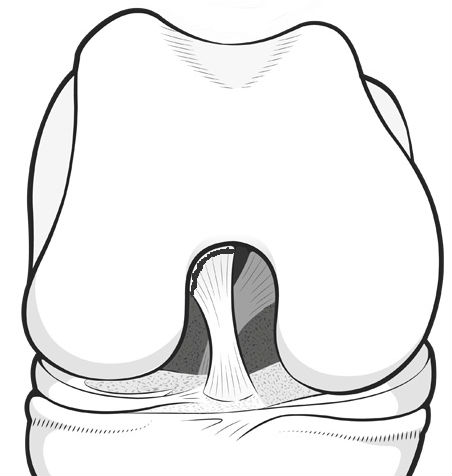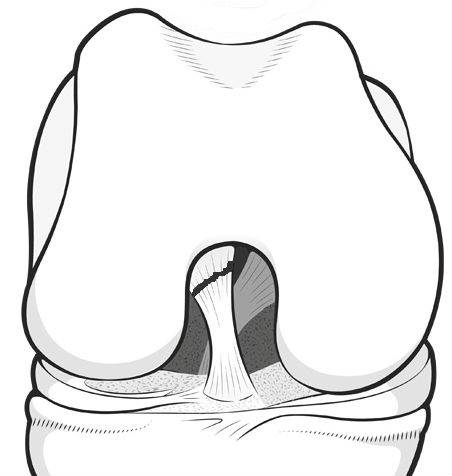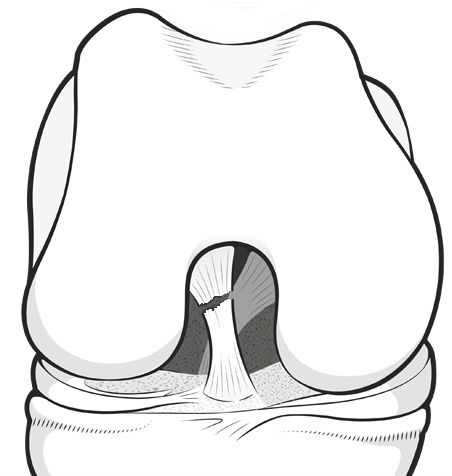The Sherman classification identifies the positioning of an anterior cruciate ligament (ACL) tear.
 Page updated January 2024 by Dr Sheila Strover (Clinical Editor)
Page updated January 2024 by Dr Sheila Strover (Clinical Editor)

Sherman Type I - really an avulsion from the bone at the top of the notch rather than a tear through the substance of the ACL.

Sherman Type II - a tear through the substance of the ACL in the upper 1/3 of the ligament.

Sherman Type III.
[Type IV has the tear right in the middle of the ligament.]
The relevance of the Sherman classification for ACL tears
The situation of the anterior cruciate ligament tear is particularly relevant in injuries of children. Type I tears (avulsions) are particularly amenable to repair as opposed to reconstruction. Reconstruction may be problematic in children where the bones are still growing as the surgeon will likely try to avoid any injury to the growth plate when making the tunnels for the new ligament.
Quick links
Peer-reviewed papers
-
Quote:
"[In this study] Type I tears were seen in 16%, type II in 27%, and type III in 52% of patients....[and their] incidence of type I tears was significantly higher in patients older than 35 years, [with] more type I tears in females....It is possible that with low-energy injuries the ligament tends to avulse off the wall, while with high-impact injuries, the ligament is more commonly disrupted in the midsubstance."
Citation: van der List JP, Mintz DN, DiFelice GS. The Location of Anterior Cruciate Ligament Tears: A Prevalence Study Using Magnetic Resonance Imaging. Orthop J Sports Med. 2017 Jun 22;5(6):2325967117709966. doi: 10.1177/2325967117709966. PMID: 28680889; PMCID: PMC5484434.